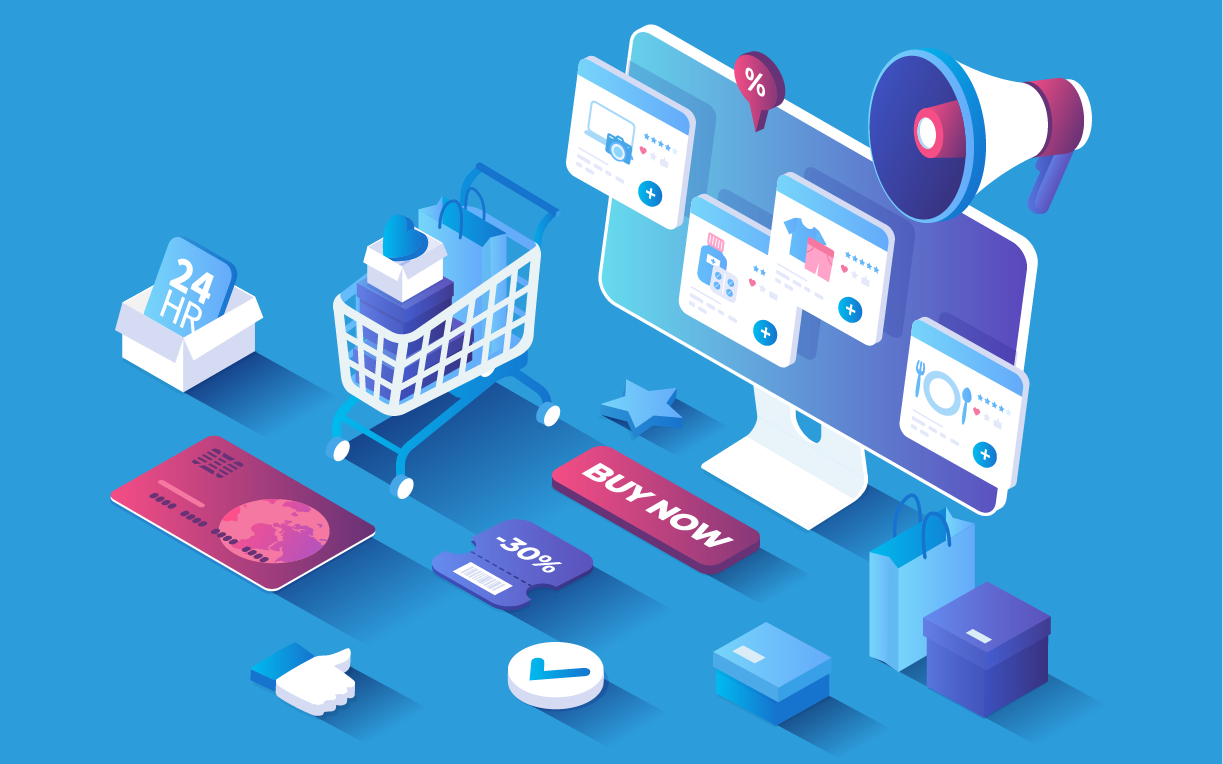
Today, analytics and data visualization are the fastest-growing areas. The early adopters of data analytics these days are e-commerce businesses. Organizations that are unable to conduct their own data analysis can use IT outsourcing consulting services to make informed business decisions.
And predictive analytics tools help companies manipulate their data (the so-called Big Data) to predict how consumers will behave in the future: what will they buy, when, and for what amount? So many questions to which it is possible to provide an element of the answer, in particular by analyzing data. And for the main question “why to use predective analytics for ecommerce” we have an answer.
Table of Contents
Why such a craze around predictive analytics?
The demand for predictive analytics tools is exploding as companies today look for ways to turn data into useful insights for their business. This may be your case. You’re accumulating customer data, but what do you actually do with it? Hiring someone to manage this quest for meaning with data is costly, and there aren’t that many specialists on the market. Only large companies can afford this approach. Entrusting this predictive analysis to an external service provider is much more suitable for the majority of companies.
How predictive analytics works
Predictive analytics is the process of using data analytics to make predictions based on data. This process uses data as well as analytical, statistical, and learning techniques to create a predictive model for predicting future events.
The term “predictive analytics” describes the application of statistical or machine learning techniques to quantitatively predict the future. Often, supervised machine learning techniques are used to predict future value or to estimate probability.
Initially, predictive analytics is tied to a business goal, whether it’s using data to reduce waste, save time, or lower costs. The process transforms heterogeneous and often massive data sets into models that can produce clear, actionable results that help achieve that goal, whether it’s reducing material waste, reducing inventory holdings, or producing products to specifications.
Reasons to adopt predictive analytics for your e-commerce site
Personalization of customer data
Personalized advertising attracts customers searching for a fulfilling buy. Big data may assist e-commerce enterprises in this situation by allowing them to identify and enlighten customers by providing tailored content based on preferences, purchase history, and current trends. Customers may be encouraged to purchase other products or items that complement what they have previously purchased. One of the primary advantages of shopping cart research is the ability to control how much money you invest. Consumers are drawn to items that have been labeled as trendy, as well as discounted items.
Personalized customer experience
The shopping experience of a consumer is essential in determining whether or not they convert. Customers nowadays have various possibilities. As a result, e-commerce enterprises should try to enhance their e-commerce experience in order to first attract and then keep consumers, resulting in increased income. In this case, data analytics may be incredibly beneficial because it aids in the discovery and interpretation of customer patterns. Data analytics may be used to track consumer behavior on a website and hence determine when they depart. It will be easier for merchants to determine what modifications are required to keep customers interested. Companies may consider using data analysis and visualization services if necessary.
With predictive analytics, you can learn a lot about your target marketing, including:
- What do customers need?
- What do customers want?
- How do customers buy?
- Where do customers look for buying advice?
And a frequent example of using this is personalized messages. People respond better to them, so a business can use predictive analytics to create a personalized experience for everyone in your target audience.
Environmental scanning
E-commerce enterprises must consider aspects such as consumer wants and preferences when determining what to market and what not to advertise. Businesses must have what customers want in order to achieve the best conversion. To get these objectives, customer behavior must be predicted. Today, a company’s e-commerce competence is judged not just by its marketing capabilities, but also by its ability to utilize analytics to forecast what its consumers will buy. Predictive analytics may also assist businesses in anticipating undesirable occurrences and improving reaction times. Large volumes of historical data are stored by data warehousing businesses so that companies may investigate intervals and trends for forecasting.
Analysis of appropriate pricing
Businesses must aim to give consumers the most recent products and services in order to increase conversions and attract new clients in order to remain competitive. Affordability is one of the most essential aspects of a customer’s buying list when it comes to e-commerce. Companies must continually compete with one another to provide the highest comparable value through their pricing strategy. Without data analysis, it is hard to continually adjust the prices of hundreds of goods, resulting in consumer loss to competitors. Most IT consulting, and outsourcing firms provide data visualization services that enable businesses to swiftly ingest massive volumes of information. Retailers can use e-commerce data analytics to determine the best sales strategy, such as whether to offer promotional rewards and whether to price items higher or lower.
Effective supply chain management
E-commerce companies must manage a complicated supply chain. They oversee a variety of merchants, wholesalers, warehouses, and other firms and must manage deliveries, reservations, refunds, swaps, and other obligations smoothly. A firm will not be able to prosper in the long run unless it has good supply chain management. Companies are increasingly using analytics to assess and improve their supply chain operations. Compared to prior methods, e-commerce data analysis gives a considerably more reliable and competitive management system.
If you feel the need to outsource data visualization consulting services or data storage services, be sure to turn to top IT outsourcing companies such as INOXOFT. Do your research, determine your goals and budget, and then close the deal. As big data analytics becomes available and more online companies adopt it, it will soon become a requirement for all e-commerce businesses.
RELATED ARTICLES
Latest Articles
 The Strategic Value of Purchasing FontsIn TipsApril 18, 2024In today’s visually driven world, fonts are more […]
The Strategic Value of Purchasing FontsIn TipsApril 18, 2024In today’s visually driven world, fonts are more […] Revolutionizing Business: How AI Transforms Customer Experience in the Inflatable IndustryIn BusinessApril 16, 2024Inflatable water slides are the epitome of summer fun, […]
Revolutionizing Business: How AI Transforms Customer Experience in the Inflatable IndustryIn BusinessApril 16, 2024Inflatable water slides are the epitome of summer fun, […] Most Asked Microservice Interview Questions For 2024In TechnologyApril 2, 2024To keep up with changing trends in the tech industry […]
Most Asked Microservice Interview Questions For 2024In TechnologyApril 2, 2024To keep up with changing trends in the tech industry […] Best JavaScript and CSS Library In 2024In TechnologyApril 2, 2024With the ever-expanding functionality of web […]
Best JavaScript and CSS Library In 2024In TechnologyApril 2, 2024With the ever-expanding functionality of web […] Front-End Development Trends to Follow in 2024In TechnologyApril 2, 2024For better engagement, the front-end development of […]
Front-End Development Trends to Follow in 2024In TechnologyApril 2, 2024For better engagement, the front-end development of […] Simplifying Mealtime: Meal Prepping for a Family of FourIn UncategorizedMarch 22, 2024In the hustle and bustle of daily life, planning and […]
Simplifying Mealtime: Meal Prepping for a Family of FourIn UncategorizedMarch 22, 2024In the hustle and bustle of daily life, planning and […] How to Freeze Dry Candy With And Without a Machine?In FoodFebruary 27, 2024A candy lover constantly searches for novel and […]
How to Freeze Dry Candy With And Without a Machine?In FoodFebruary 27, 2024A candy lover constantly searches for novel and […] How to Get Something Out Of Your Eye Immediately?In healthFebruary 27, 2024Getting something inside your eyes can be frustrating […]
How to Get Something Out Of Your Eye Immediately?In healthFebruary 27, 2024Getting something inside your eyes can be frustrating […] The Evolution of Remote Control Technology: From RC Cars to DronesIn TechnologyFebruary 22, 2024Remote control technology has come a long way since […]
The Evolution of Remote Control Technology: From RC Cars to DronesIn TechnologyFebruary 22, 2024Remote control technology has come a long way since […] Unveiling the most popular carnival costumes: A colorful parade of creativityIn FashionFebruary 19, 2024In the world of festivities and merrymaking, few […]
Unveiling the most popular carnival costumes: A colorful parade of creativityIn FashionFebruary 19, 2024In the world of festivities and merrymaking, few […] Custom GPTs: The Next AI Opportunity for BusinessesIn Business, TechnologyFebruary 14, 2024The rise of artificial intelligence has transformed […]
Custom GPTs: The Next AI Opportunity for BusinessesIn Business, TechnologyFebruary 14, 2024The rise of artificial intelligence has transformed […] How to Get Rid of a Canker Sore in 24 Hours?In healthFebruary 13, 2024Canker sores are also called aphthous ulcers. They […]
How to Get Rid of a Canker Sore in 24 Hours?In healthFebruary 13, 2024Canker sores are also called aphthous ulcers. They […]
stopie.com is a participant in the Amazon Services LLC Associates Program, an affiliate advertising program designed to provide a means for sites to earn advertising fees by advertising and linking to Amazon.com.
Clicking on an Amazon link from stopie.com does not increase the cost of any item you purchase.
We will only ever link to Amazon products that we think our visitors may be interested in and appreciate learning more about.



